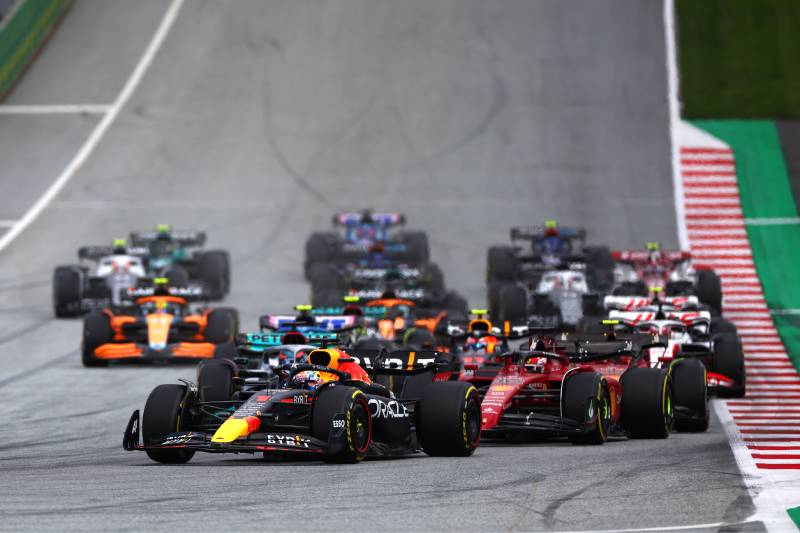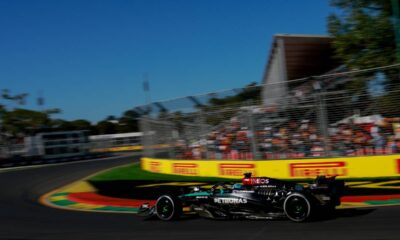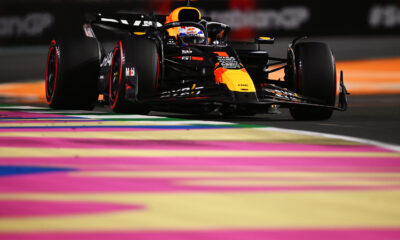Motorsport
The potential fate of the cancelled Chinese Grand Prix or Why this year’s F1 calendar is sensibly stacked
In recent years, it has become customary that the final versions of the Formula 1 calendars do not surface until a few weeks before the start of the season. Where are the days when fans knew the final order of the grand prix for the upcoming season in the summer months?

In recent years, it has become customary that the final versions of the Formula 1 calendars do not surface until a few weeks before the start of the season. Where are the days when fans knew the final order of the grand prix for the upcoming season in the summer months? One can’t be surprised, however. The coronavirus pandemic continues to affect the world around us. Especially in China, where the queen of motorsport will not show up for the fourth year in a row. Does this mean the end of the grand prix there? What venues can potentially replace it? And why does the F1 calendar for the 2023 season arouse so much passion with regard to the logistical position of the various grand prix?
The coronavirus continues to affect the F1 calendar
It could be considered a well-worn song. Another year, another additional change to the Formula 1 calendar. As if fate didn’t wish for motorsport’s most prestigious series to host as many grand prix as originally planned.
A record 22 races were planned for the 2020 season. Then came the coronavirus pandemic and the F1 community had to settle for the “good old” 17. Subsequently, we were promised 23 grand prix for both 2021 and the following year.
However, in both cases, there was always one less grand prix. And now F1 has been tempted by a – again record – 24 grand prix for the 2023 season. Unfortunately, the coronavirus continues to affect human lives across the planet. And where it came from, it is currently killing thousands of people a month, more than three years after the pandemic began.
Although the rest of the world is successfully recovering from a very troubled start to the third decade of the 21st century, it is not losing momentum in China. That’s why, because of the ongoing pandemic in the world’s most populous nation, Formula One has decided to cancel the local grand prix for the fourth consecutive year.
Goodbye China?
Despite all the hopes and efforts of the Chinese organizers in the return, so to speak now, of the traditional event, the queen of motorsport will not show itself to the local fans even in 2023.
China’s failure to grapple with the pandemic is putting wrinkles on the foreheads of FOM and Liberty Media. Mostly from a financial point of view, of course. While the Far Eastern superpower is an extremely important business partner for F1, the annual cancellation of the grand prix does not benefit either side.
So we can’t rule out the theoretical scenario that FOM will run out of patience with Liberty Media and take the Chinese GP off the calendar permanently. While this would potentially make the traditionally minded minority of the formula community dreaming of more European and less “non-European” grand prix happy, it would be a loss of racing on a circuit that is one of the most popular from the pen of Herman Tilke. Think, for example, of the famous grand prix seasons of 2007, 2011 and 2018.
If the worst came to the worst and we had to wave goodbye to the grand prix in China, what country could come in its place? First and foremost, the return of Portugal’s Portimao or South Africa’s Kyalami is worth discussing. In the case of Kyalami, F1 would have achieved one of its goals – to host at least one grand prix on every continent (except Antarctica).
Interest in the South African VC has been enormous over the past year. However, given the ever-present chances of a Chinese comeback – and therefore a calendar filled to the brim – there was talk of Kyalami as a replacement for the popular Belgian Grand Prix.
If China vacates its place on the calendar for good, there’s little doubt that the Belgian VC will be retained at the legendary Spa-Francorchamps circuit, along with a grand return of the equally legendary Kyalami. Maximum satisfaction for fans of historic circuits!
What are the consequences of China’s exclusion from the calendar?
Let’s return to the present and discuss the shape of the Formula 1 calendar for the 2023 season. Following the announcement that the Chinese Grand Prix will not be staged this year, the calendar has been “pared down” to a still record 23 races. For the first time since the outbreak of the pandemic, there will be no return of previously cancelled events.
74. the Formula One World Championship season will begin with the Bahrain Grand Prix on the first Sunday in March. The circus of the fastest cars and drivers will then move to Saudi Arabia. While it would make more sense to set this race a week after Bahrain, F1 wants to give the teams breathing space and proper preparation for the move to the next destination due to the pre-season testing taking place there a week before the race weekend. In two weeks’ time, it will be the turn of the Australian GP at Melbourne’s Albert Park.
However, with the removal of China from the calendar, an equally long ‘spring’ break is now on the calendar alongside the four-week summer break. Whatever the reasons for F1’s failure to fill this space with another race, such a long break disrupts the natural flow of grand prix dates. It may therefore be that the casual fan forgets about Formula 1 for this period and the television ratings for the subsequent five Grands Prix in six weeks suffer a drop.
A logistical nightmare
The “spring break” is one problem. Another comes into play almost immediately.
However, here we can turn a blind eye and forgive the International Automobile Federation for this move. Although not ideal, Azerbaijan had to move from June to the end of April due to the European season start being pushed deeper into May. And Miami, even though the U.S. portion of the season doesn’t occur until the fall, has to be inserted just in time for early May because of the hurricane season affecting that part of the U.S. from June through the rest of the calendar year.
After that, Formula 1 will finally head to Europe for a “triple-header” consisting successively of Imola, Monaco and, unusually, Barcelona. The VC of Spain has moved behind the glamorous Monaco Grand Prix, as it is tradition to host a race on the streets of Monte Carlo at the end of May.
F1 doesn’t get too hot on the old continent. After this trio of races, it will head across the Atlantic to Canada before returning to Europe. Incomprehensible planning at first glance, you might say. But people with this view would do well to go back to school or start paying attention.
The climate in Montréal, Canada, is similar to that in Europe. Moreover, it can snow here until May! It follows, therefore, that the VC of Canada simply must be classified as a European race. Otherwise, the situation of the 2020 Eifel VC could be repeated every year.
One could also single out the status of the events in the last quarter of the season. After Japan, Qatar follows illogically, but here too an explanation can be found. The MotoGP calendar has a hectic second half. There is no room left for Qatar, or rather for the Lusail circuit, whose facilities have to be improved for the F1 races, in view of the other grand prix of the MotoGP.
Because of this, MotoGP has chosen 19 November as the date for its only night race. And since the races of two of motorsport’s biggest disciplines cannot be held too close together, F1 took the somewhat unpopular, but within reason, step of choosing October 8 as the date for its own VC of Qatar.
The order of the four races in America, which will take place five weeks apart, is also not 100% perfect. After travelling south from Austin, through Mexico and into Brazil, the paddock returns to the USA, or rather Las Vegas, where the queen of motorsport returns after 41 years. Perhaps it’s not convenient for Formula One to host two grand prix in the United States, which would explain this sequence of races.
In the end, the status of the Abu Dhabi VC needs no explanation. Money. But also the “goodwill” of the FIA, which has decided to help the sport’s workers to stretch the winter break as far as possible. Grand Prix held in December (as they have been recently) could be a thing of the past.
Conclusion?
What can be concluded from the above is that although the positions of some of the grand prix on this year’s F1 calendar may seem absurd to many, the International Automobile Federation cannot be blamed too much for the steps it has taken during the planning of the calendar. On the contrary, it has managed to put together a relatively sensible grand prix schedule for next year.
The FIA has already stated that it will try to shape the Formula One calendar in the coming years so that the individual races are as closely linked as possible and that the carbon footprint of travelling from one grand prix to the next is as small as possible.
And the argument that seasons should not read 20+ races a year, thus making the calendars more manageable, is of course spot on. It’s just that today’s world of pro sports, whose primary goal is to maximize profit, doesn’t allow for any of that.
Sources: F1, Autosport, planetf1












